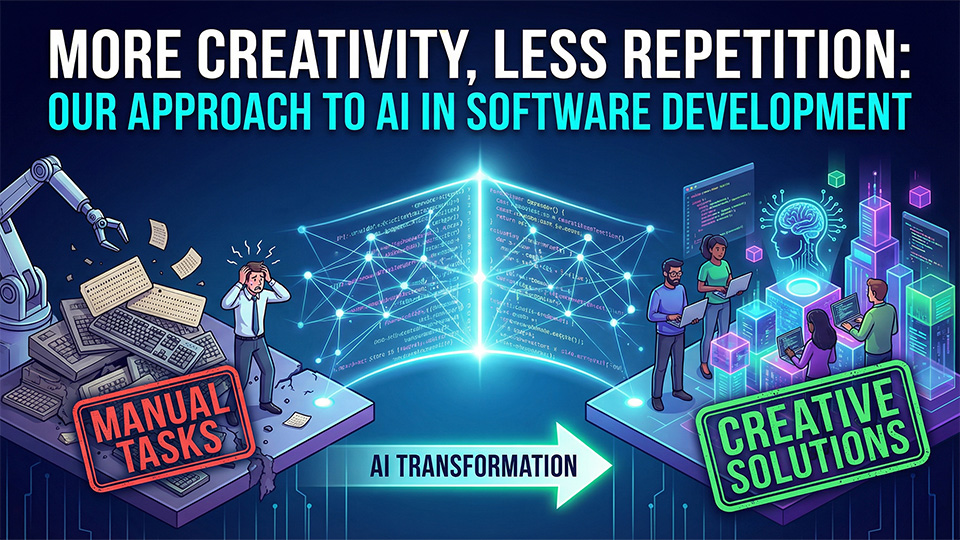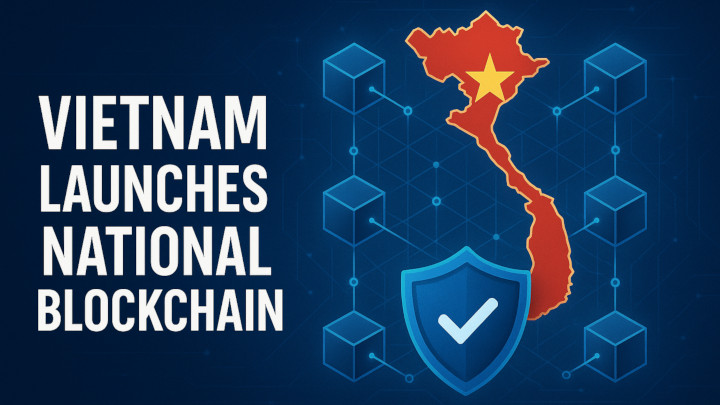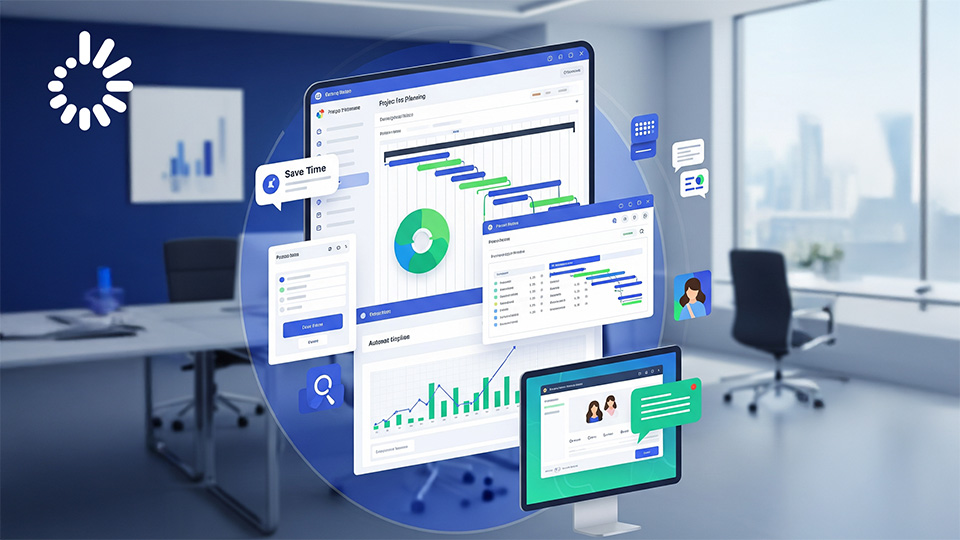July 16, 2025
Our Mission to End Project Failure: The Founder Story Behind Baulders
Ever felt like you were navigating a minefield while managing a complex project? This familiar feeling is exactly what drove Laurent Peguret and Guy Trocellier to create something different.
After decades on the frontlines of major infrastructure programs, these professionals learned about an alarming reality within all industries and sectors: 80% of projects abandoned, 99.5% failing to meet goals. This reality was uncovered by a large study undergone by an Oxford University professor and his students, spanning over more than 16,000 projects across all industries. For them, these weren't just statistics – they represented wasted effort and missed opportunities for the whole world.
This isn't just about a new product. It's about why two veterans decided enough was enough – and how their journey led to a solution addressing the project challenges they lived through daily.
I. In the Eye of the Storm: Decades on the Infrastructure Frontline
Laurent and Guy built their careers working on construction and railways projects, mostly billion-dollar infrastructure initiatives across multiple continents. These weren't ordinary projects – they were high stakes complex undertakings with hundreds of stakeholders, millions of tasks.
"We'd spend countless hours analyzing reports, yet somehow, the most critical risks could still catch the teams by surprise. It wasn't about working harder – it was about finding a way to see the weak signals of sources of risks that could truly impact the project, as early as possible in the design or production," recalls Laurent.
The daily reality was a constant battle against information overload. Teams drowned in siloed data and endless reports while struggling to prioritize what truly mattered. Making critical decisions often meant relying on incomplete pictures with high stakes consequences.
The most frustrating challenge? Digitalization and modern project management softwares have brought wonders in reducing paper waste and improving communication, but on the other hand, have added another layer of skill required to access information. Sources of Emerging risks remained hidden until they became crises. Despite experience and dedication, project teams often found themselves constantly in reactive mode – fighting fires instead of preventing them. The stress of watching carefully planned projects derail despite their best efforts can take a personal toll.
"After twenty years in the field, we realized something profound: projects become bigger, more and more complex, but the human organisations in charge of them are the same, more or less. Unsustainable in the long term," Guy explains.
What truly transformed their thinking was realizing this wasn't unique to their experience. From construction to software development to organizational change, professionals across sectors shared the same story. This wasn't just about individual project failures – it was a systemic issue affecting project teams everywhere.

II. The "Tip of the iceberg" Moment: The Genesis of Baulders
With the infobesity mounting it was obvious that AI and computing power was a means of assistance so that the limited attention bandwidth of teams could be spared by raising priority issues from the depths of the information system, onto the “tip of the iceberg”, I.e. the few issues that are strategic, highly impactful and clearly in distress.
Using years of experience of Guy in Systems engineering and Laurent mobilizing Dirox team around the vision, an algorithm was developed in order to do the « infovalorisation » required, ranking the informations in their order of strategic importance.
"We asked ourselves: what if we could build something that made the invisible visible before it was too late?"Laurent remembers.
Their core question became an obsession: How could they transform project management from reactive firefighting to proactive prevention? The existing tools were part of the problem – adding complexity rather than clarity, generating “infobesity”, with more noise than insight.
They envisioned a fundamentally different approach to project reviews, a strategic and systemic approach. Not another checklist of tasks or reporting tools, but a hybrid intelligent system that could help teams rise above the ordinary tactical tasks, and do 360 reviews of “mastery” of all strategically important matters for the success of the project. The goal was simple but revolutionary: help teams make better decisions earlier.
"We didn't want to create just another tool," emphasizes Guy. "We wanted to change how people experience projects – less stress, more confidence, better outcomes."
III. Building Baulders: From Field Insight to Functional Solution
Transforming their vision into reality meant establishing clear guiding principles. First among these was addressing information overload head-on – creating a system that could identify what truly matters amid the noise.
They recognized that while AI offered powerful capabilities, the human element remained irreplaceable and needed to always remain with the final say. The solution would need to blend data clarity with human judgment, leveraging technology to enhance – not replace – experienced insight.
"We've seen too many tools that overwhelm users with features," says Laurent. "We wanted Baulders to feel like a Compass, showing at first glance the right direction."

Collaboration became another cornerstone. The platform would connect project leaders, AI analysis, and human experts (affectionately called "Bauldies") into a unified ecosystem where insights could flow freely across traditional barriers.
Perhaps their most crucial insight was balancing structure with adaptability. Their years in the field taught them that while standardized reviews provided consistency, each project's unique challenges required flexibility.
"The biggest challenge wasn't technical – it was psychological," Guy notes. "We had to create something that felt intuitive to people who are already stretched thin and skeptical of 'yet another tool.' Making project reviews faster and easier is essential so that they actually get done"
IV. Baulders Today: More Than Software, It's a Philosophy
Today, Baulders represents a fundamental shift in how teams approach project reviews.
"When we see project teams spending less time in crisis mode and more time doing meaningful work, that's when we know we're succeeding," Laurent shares.
Their hope extends beyond individual projects to creating more resilient, goal-driven organizations. By enabling teams to anticipate problems before they emerge and prevent cascading failures, Baulders helps transform how people experience their work.
The ultimate vision? Projects that consistently deliver better outcomes with teams that experience greater satisfaction and less burnout. A world where the stress of project management gives way to confidence and clarity.
V. “Eating Your Own Dog Food” strategy
When Laurent, also co-founder at Dirox, presented the concept of Baulders to Dirox Management team, COO Chinh Phan reaction was “ That is a good product, We could use it !”. Investment decision was made at Synexser Hldg providing essential early support for Baulders' development with Dirox team.

Walking the Talk: Baulders in Action at Dirox
Dirox actively uses the solution it helped build. Dirox's production department now employs Baulders for its critical project reviews, showing strong belief in its value.
Before Baulders, project evaluations at Dirox were often inconsistent and fragmented. This made it hard to get an unbiased view of project health or recurring risks.

Implementing the Solution: How Dirox Uses Baulders
To solve these challenges, Baulders was implemented to standardize how projects are reviewed and evaluated. The system features:
Structured Reviews
Projects undergo quarterly or on-demand reviews.
- Project teams (Actors) conduct structured self-assessments.
- Department heads and technical leads (Experts) provide expert evaluations.
Comprehensive Evaluation Criteria
Key areas meticulously assessed include:
- Methodology adherence and documentation quality.
- Risk management, resource efficiency, and financial health.
- Client satisfaction and feedback.

Clear Scoring & Impact
Each area is rated, generating a project “health” score and "flame" status. These insights directly feed into quarterly planning and improvement strategies.

Tangible Results: The Baulders Impact at Dirox
Since using Baulders internally, Dirox has seen significant positive changes. Key impacts observed include:
- A notable improvement in overall project scores and deliverability On-Time, On-Quality, On-Budget.
- Earlier identification of operational gaps and previously hidden risks.
- Clearer visibility for leadership across all departments.
- More consistent and objective evaluations throughout the company.
- More profitable operations by reducing rework wastage of ressources.
- More client satisfaction.

A Testament to Practical Value
For Dirox, and by extension its clients and partners, this internal adoption of Baulders proves its real-world effectiveness. It acts as a behind-the-scenes advantage ensuring project discipline and transparency.
Dirox's Conviction in the Baulders Mission
Dirox is proud of this association and deeply believes in Baulders' mission. Their shared goal is to revolutionize project reviews for organizations everywhere.
Conclusion: Join Us in Reviewing “What Matters”
Our journey from the field to founding Baulders has been driven by a single belief: we can do better when it comes to managing projects and risks. Every feature, every innovation comes from lived experience – the hard lessons we learned over decades navigating complex projects.
We invite you to reflect on your own project challenges. How much time does your team spend firefighting versus creating value? What would change if you could spot critical risks weeks or months earlier?
Curious to see how our vision translates into reality? Learn more about Baulders' approach and discover how our platform is helping teams across industries make better decisions, earlier.






























.svg)













